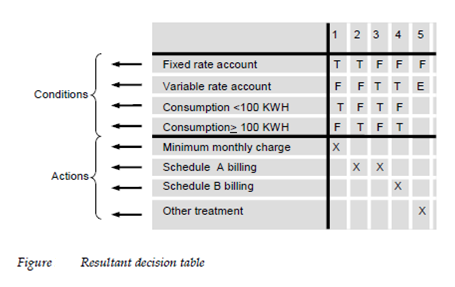Program Design Language
The Program Design Language which is also known as PDL also called structured English or pseudo code, is a pidgin language in which it uses the vocabulary of one language example for English and the overall syntax of another example for a structured programming language In this chapter PDL is used as a broad reference for a design language.
At 1st glance PDL looks something such as any modern programming language. The dissimilarity among PDL and a modern programming language lies in the use of narrative text example for English embedded straight within PDL statements. Because narrative text is embedded straight into a syntactical structure PDL cannot be compiled. Moreover PDL processors presently exist to translate PDL into a graphical representation example for a flowchart of produce and design nesting maps a design operation index cross reference tables and a variety of other information.

The program design language Amy is a simple transposition of a language like as C or ADA. Otherwise it may be a product purchased specifically for procedural design. Anyway origin a design language should have the subsequent characteristics:
• the fixed syntax of keywords which gives for all structured constructs data modularity and declarations characteristics.
• A free syntax of natural language which define processing features;
• The Data declaration facilities which should include both simple scalar and array and complex linked list or tree data structures; and
• Subprogram definition and calling methods which support several modes of interface description.
Presently a high order programming language is often used as the basis for a PDL. For example, Ada- PDL is broadly used in the Ada community as a design definition tool. The Ada language format and constructs are mixed with English narrative to form the design language.
The basic PDL syntax should comprise constructs for subprogram definition data declaration and interface description; and methods for block structuring condition constructs repetition constrictors and Input or Output constructs. The semantics and format for some of these PDL constructs are presented in the section which follows.
It should be noted which PDL can be extended to include keywords for multitasking and\or simultaneous processing interrupt handling inter process’s, synchronization and several other features. Application design for that PDL is to be used should dictate the final form for the design language.
A PDL Example
To describe the use of PDL we present an example of a procedural design for the Safe Home privacy system software introduced in previous chapters. The Safe Home system in question monitors alarms for smoke, fire, water, burglars, and temperature example for furnace breaks although home owner is produces an alarm signal; away during winter; and calls a monitoring service, generating a voice synthesized message. In the PDL that follows we describe some of the important.
Recall it which PDL is not a programming language. The designer can adapt as need without worry of syntax errors. Moreover, the design the monitoring software would have to be revisit do you see any problems and future refined previous to code could be written. The basic PDL defines an elaboration of the procedural design for the privacy monitor procedure.